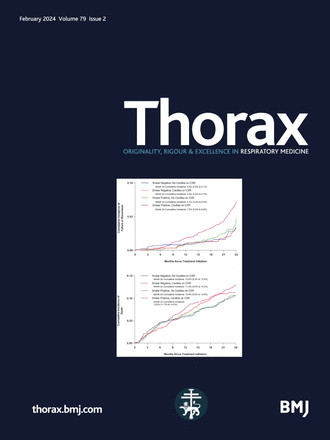Journal club
IF 9
1区 医学
Q1 RESPIRATORY SYSTEM
引用次数: 0
Abstract
In 2015 the WHO set ambitious targets to tackle the global epidemic of Mycobacterium Tuberculosis (TB), including increased detection, reduced mortality, and decreased economic burden of disease, however, the WHO update from September 2023 reports that none are on track for their 2025 milestones (https://reliefweb.int/report/world/global-tuberculosis-report-2023). This situation is not new- globally all three of the 2020 milestones were missed despite some country specific successes. However, the pandemic has had a major impact, stalling, or outright reversing pre-pandemic progress. For example, overall incidence estimates had declined year-on-year between 2010 and 2020 from 11.4 million (95% CI, 8.94,14.10) to 10 million (95% CI, 9.40,10.70). However, in 2021 and 2022, global incidence estimates increased to 10.3 million (95% CI, 9.64,11.00) and 10.6 million (95% CI, 9.87,11.40) respectively. Similar trends were seen in mortality, although the initial increase was in 2020 with 1.37 million estimated deaths compared with 1.32 million in 2019, with the number returning back to pre-pandemic levels (1.30 million, 95% CI 1.18 to 1.43) in 2022. The timing discrepancy reflects the delayed onset of the disease post infection, compared with the more immediate effects of reduced access to treatment. Shockingly, they estimate that 500 000 excess TB deaths occurred compared with if pre-pandemic trends had been maintained. As it stands, the total reduction in incidence rate and TB deaths in 2022 compared with 2015 were 8.7% and 19% respectively, a long …期刊俱乐部
2015 年,世卫组织为应对结核分枝杆菌(TB)在全球的流行制定了雄心勃勃的目标,包括提高检测率、降低死亡率和减少疾病的经济负担。然而,世卫组织 2023 年 9 月的最新报告显示,没有一项目标能够如期实现 2025 年的里程碑 (https://reliefweb.int/report/world/global-tuberculosis-report-2023)。这种情况并不新鲜--在全球范围内,尽管一些国家取得了成功,但 2020 年的所有三个里程碑都未能实现。然而,大流行产生了重大影响,使大流行前取得的进展停滞不前,甚至完全逆转。例如,2010 年至 2020 年期间,总发病率估计值逐年下降,从 1140 万(95% CI,894,14.10)降至 1000 万(95% CI,940,10.70)。然而,2021年和2022年,全球发病率估计值分别增至1030万(95% CI,964,11.00)和1060万(95% CI,987,11.40)。死亡率也出现了类似的趋势,但最初的增长是在 2020 年,估计死亡人数为 137 万,而 2019 年为 132 万,到 2022 年,死亡人数将恢复到疫情流行前的水平(130 万,95% CI 118-143 例)。时间上的差异反映了感染后发病的延迟,而获得治疗的机会减少则会产生更直接的影响。令人震惊的是,他们估计,与大流行前的趋势相比,结核病死亡人数将多出 50 万。目前的情况是,与 2015 年相比,2022 年结核病发病率和死亡人数的总降幅分别为 8.7% 和 19%,这是一个漫长的过程......
本文章由计算机程序翻译,如有差异,请以英文原文为准。
求助全文
约1分钟内获得全文
求助全文
来源期刊

Thorax
医学-呼吸系统
CiteScore
16.10
自引率
2.00%
发文量
197
审稿时长
1 months
期刊介绍:
Thorax stands as one of the premier respiratory medicine journals globally, featuring clinical and experimental research articles spanning respiratory medicine, pediatrics, immunology, pharmacology, pathology, and surgery. The journal's mission is to publish noteworthy advancements in scientific understanding that are poised to influence clinical practice significantly. This encompasses articles delving into basic and translational mechanisms applicable to clinical material, covering areas such as cell and molecular biology, genetics, epidemiology, and immunology.
 求助内容:
求助内容: 应助结果提醒方式:
应助结果提醒方式:


